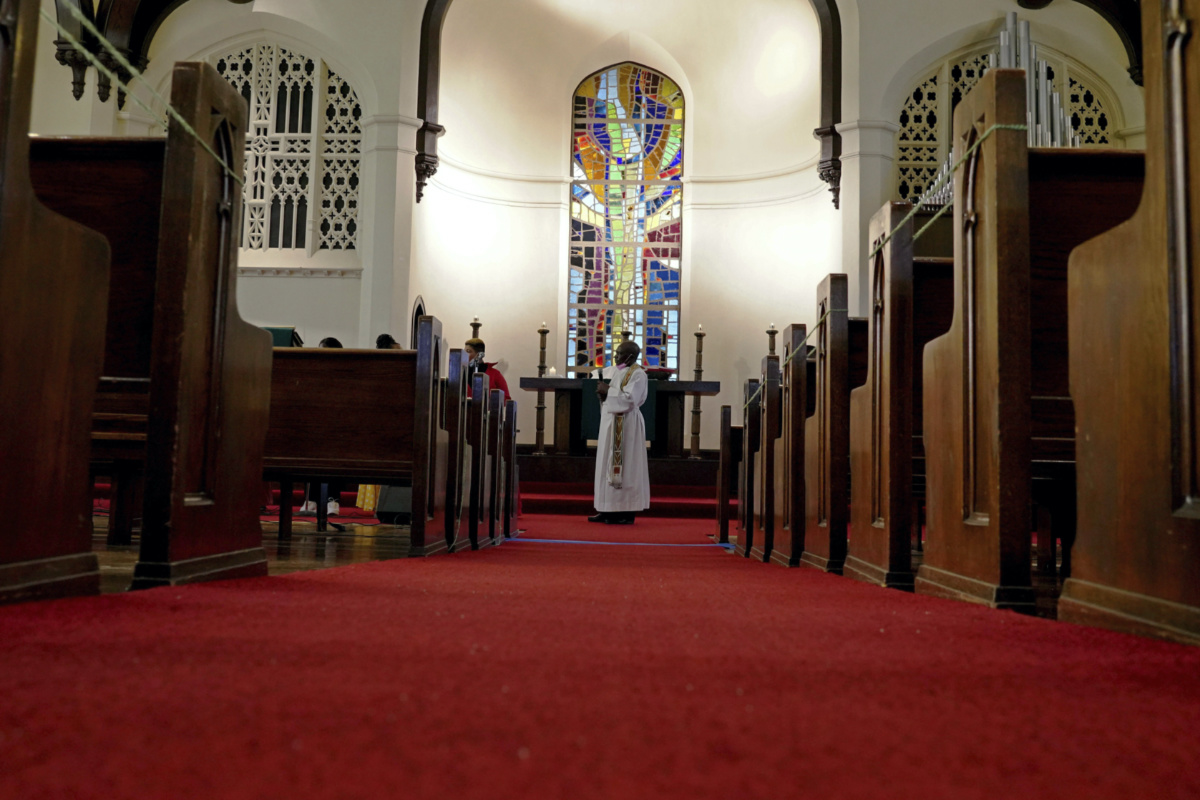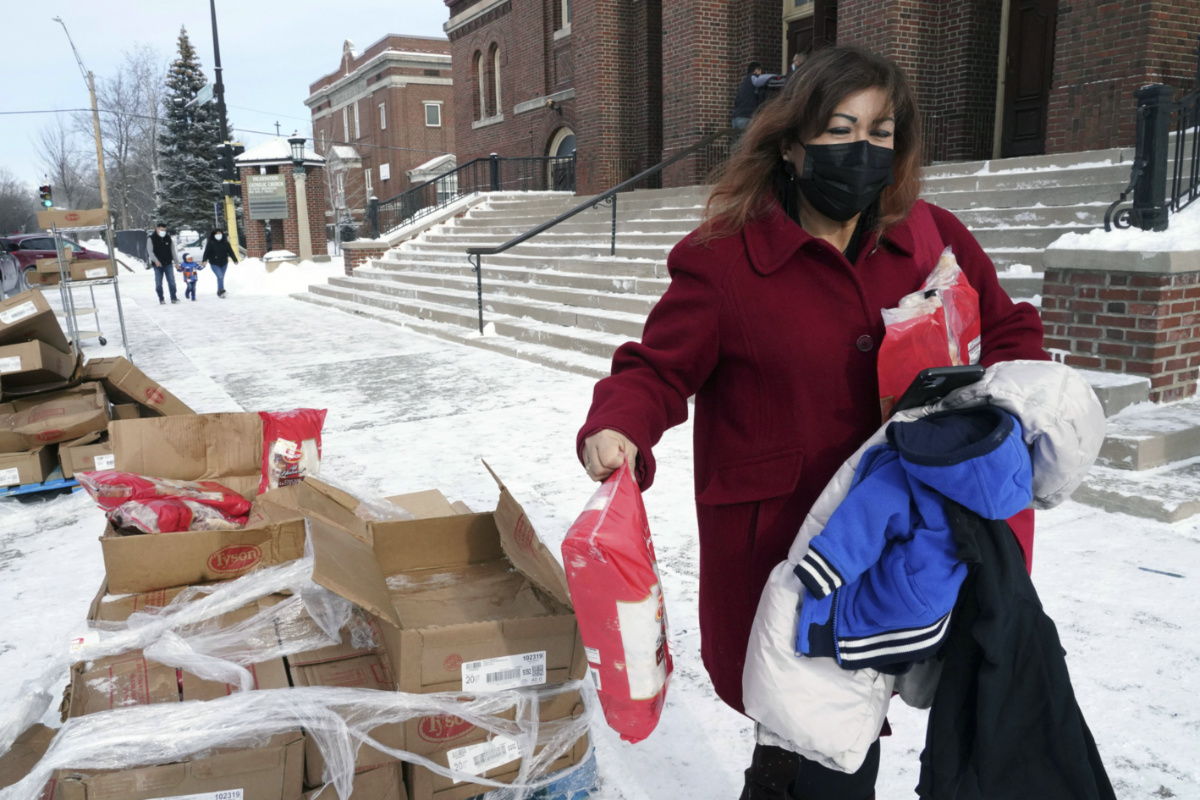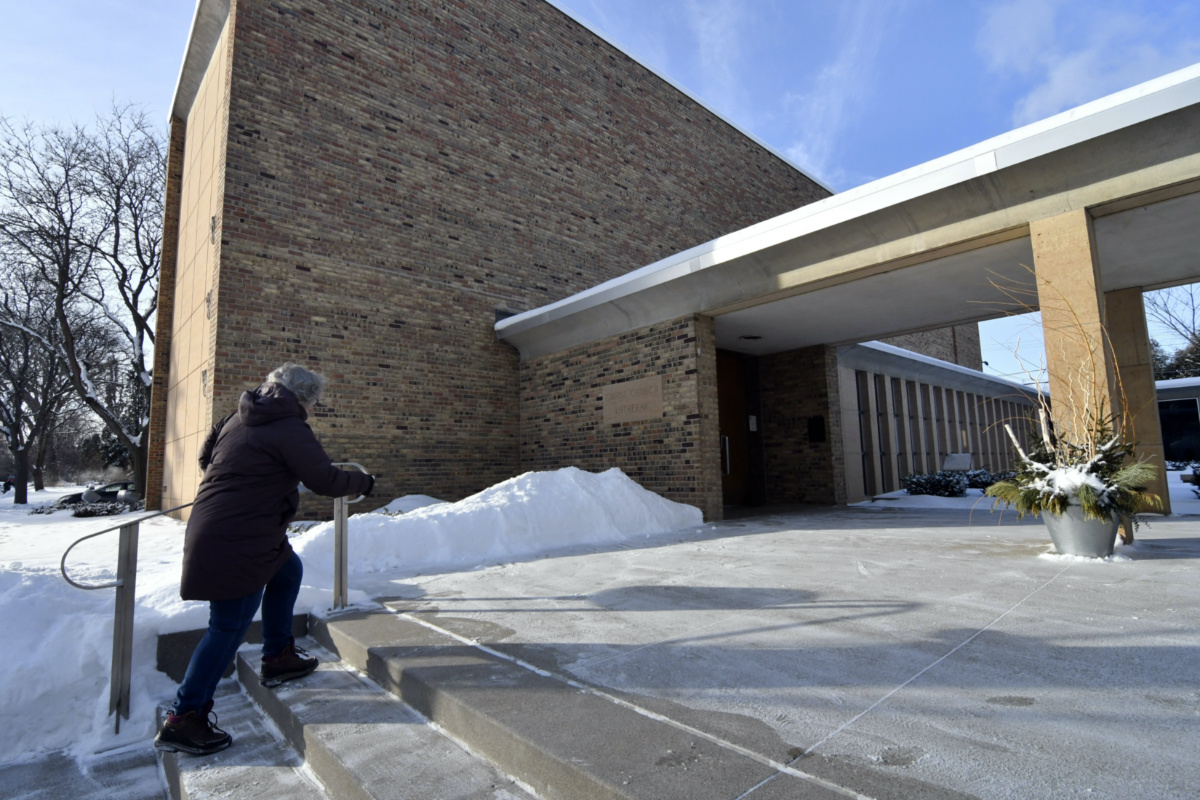
GIOVANNA DELL’ORTO, of Associated Press, reports on how historic urban churches are finding new ways to use their buildings in the US…
Minneapolis, US
AP
The pews were rocking at Holy Trinity on a recent Sunday as worshippers from the Minnesota Swahili Christian Congregation sang and danced beneath the lofty, dark-wood-trimmed ceilings and lively stained-glass windows.
Established in the 1920s, the magnificent house of worship once hosted one of the largest Lutheran congregations in the country but has dwindled to just 200 regular Sunday worshippers today. To remain vibrant, the founding congregation has increasingly opened its historic doors to serve a variety of community needs, from the Swahili-language services to functioning as a makeshift emergency medical centre during protests after the 2020 police killing of George Floyd.
“In the last two years, it’s become even clearer to me that the Spirit has been guiding us in places where we never imagined going on our own,” said Ingrid Rasmussen, Holy Trinity’s lead pastor.

Andrea Mwalilino, pastor of Minnesota Swahili Christian Congregation, officiates at the service held at Holy Trinity Lutheran Church, on Sunday, 23rd January, in Minneapolis. PICTURE: AP Photo/Jim Mone.
Across the US, historic urban churches built decades ago to accommodate hundreds or thousands of worshippers and bulging Sunday school classes have struggled with shrinking flocks and rising preservation costs. Many are finding new ways to use their buildings that let them keep those sacred places viable while serving the neighborhoods they’ve anchored for decades.
In Minneapolis, landmark churches have hosted everything from food pantries and Finnish language classes to tai-chi practices and group discussions on reparations. Elsewhere in the country, they’ve rented space for events or programs like preschools, bringing in much-needed revenue, and also made their buildings available for free to community group gatherings as diverse as nutrition clinics and arts workshops.
“Congregations have enormous civic value but are often underused.”
– Bob Jaeger, president of Partners for Sacred Places.
Historic religious buildings are not just civic and cultural landmarks but crucial social centers, with non-congregants making up an estimated 90 per cent of the people they serve, according to Bob Jaeger, president of Partners for Sacred Places. The non-profit helps religious institutions nationwide make plans and raise money to repurpose their spaces for a different era, and Jaeger sees plenty of room for more to be done in that area.
“Congregations have enormous civic value but are often underused,” he said.
Surveys show the United States keeps growing more secular, with overall membership and churchgoing on the decline. Fewer souls in the pews means less money coming in to pay for staffing, upkeep and programs, forcing many smaller congregations to sell their buildings.
The coronavirus pandemic has only exacerbated those problems by further shrinking attendance. It has also heightened the need for food, housing, job and educational ministries among both the faithful and broader society.
That’s especially relevant for lower-income and minority neighborhoods where faith-based informal networks are often more trusted than government authorities.
“Congregations have enormous civic value but are often underused,”The century-old Church of the Incarnation, a predominantly Spanish-speaking Catholic parish in Minneapolis, renovated its garage to host a sort of community minimarket where the 1,600 households who rely on the church for food can get free groceries and other vital goods. On a frigid Sunday, a steady stream of families came to pick up donated coats and sweaters, as well as 10 pound bags of chicken that stayed frozen despite sitting in the direct sun for hours by the steps outside the sanctuary.

A woman carrying coats picks up frozen chicken outside Church of the Incarnation, Sunday, on 23rd January, in Minneapolis. PICTURE: AP Photo/Jim Mone.
Incarnation has remodelled the basement and used it to host COVID-19 vaccination clinics that drew “tons” of people, according to Victor Guillen, a church member of three decades who oversees maintenance and volunteered on the renovation.
“People come here because we’re a center of the Latino community,” Guillen said.
Like with other churches, launching such service programs has had the benefit of increasing volunteerism and attracting more donations, allowing Incarnation to undertake a $US1 million roof restoration that’s nearly finished.
Religious buildings with surplus space are also providing cash-strapped community groups with a place to hold their own gatherings, something that’s particularly important in cities where property values and rents are high.
Neighborhood Church in Atlanta’s leafy Candler Park neighbourhood was born in the mid-2010s out of the merger of two United Methodist congregations. Proceeds from the sale of the larger church building went to finance a renovation of the smaller one, a structure from the 1930s, redesigned to minimize Christian imagery so it would better serve the diverse neighborhood, co-pastors Andy and Anjie Woodworth said.
Today it hosts not only the congregation but two voting precincts and, when the pandemic permits, the activities of more than a dozen groups that share the church’s inclusive values, from scouting troops to advocates for the rights of transgender people of color.
“We are creating a space for welcoming,” Andy Woodworth said. “Opening the church like this puts us in contact with many more people.”
The small, aging congregation of Coppin Memorial African Methodist Episcopal Church on Chicago’s South Side is another that has increasingly turned outward to the community. Membership has shrunk to about one-tenth of what it was in the 1960s, so Coppin has been struggling to pay for needed upkeep to the nearly century-old building and its artwork, including two murals in the sanctuary.
We rely on our readers to fund Sight's work - become a financial supporter today!
For more information, head to our Subscriber's page.
Through the Coppin Community Center, which provides food and family outreach programs in its adjacent youth center, the congregation has succeeded in attracting grants and growing its service ministry, said Frankye Parham, who directs Coppin’s Christian education and its community center.
The church is working on developing a new teen ministry at the request of neighborhood youth who sought Coppin out as a “safe haven” from violence and other social ills.
“The traditional ways don’t work today. We need to talk about different things that the community deals with,” said Robert Parham, Frankye’s husband, who first attended Coppin more than 50 years ago and is now a trustee.
Similar challenges have confronted the congregation at Christ Church Lutheran, a mid-20th-century National Historical Landmark designed by famed architects Eliel and Eero Saarinen: Membership plummeted so low that everyone started “wondering if we could keep the doors open,” said Mary Bode, a member for three decades and volunteer at the Minneapolis church.
With the help of Partners for Sacred Places, the church created a preservation committee to safeguard its pale-brick and blond-wood building, nestled in a tree-lined neighbourhood of bungalow houses. It has since branched out into different community uses for it and the connected education building, ranging from Montessori preschool classes to basketball leagues.

A woman arrives for the service at Christ Church Lutheran, Sunday, on 23rd January, in Minneapolis. PICTURE: AP Photo/Jim Mone.
Like others in the city, Christ Church Lutheran has sought to foster healing in the wake of Floyd’s killing. In May, 2021, on the anniversary of his death, community members gathered in its Modernist open courtyard where Miriam Samuelson-Roberts, the lead pastor, had left a laminated guide for reflection and prayer.
“People came and sat who might never have come into the church,” she said. “It’s essential for neighbors to have a space to meet.”
In some cities, using religious buildings for non-worship purposes like homeless shelters has run up against zoning rules and brought conflict with municipal authorities. But faith leaders have often been successful in arguing that such ministries are essential to their mission and community.
“Each faith has texts that compel why to do this,” said Randi Roth, executive director of Interfaith Action of Greater St Paul, Minnesota, where the group has been working with the city planner on zoning code amendments. “But for all, it brings to life the words they read in prayer.”





